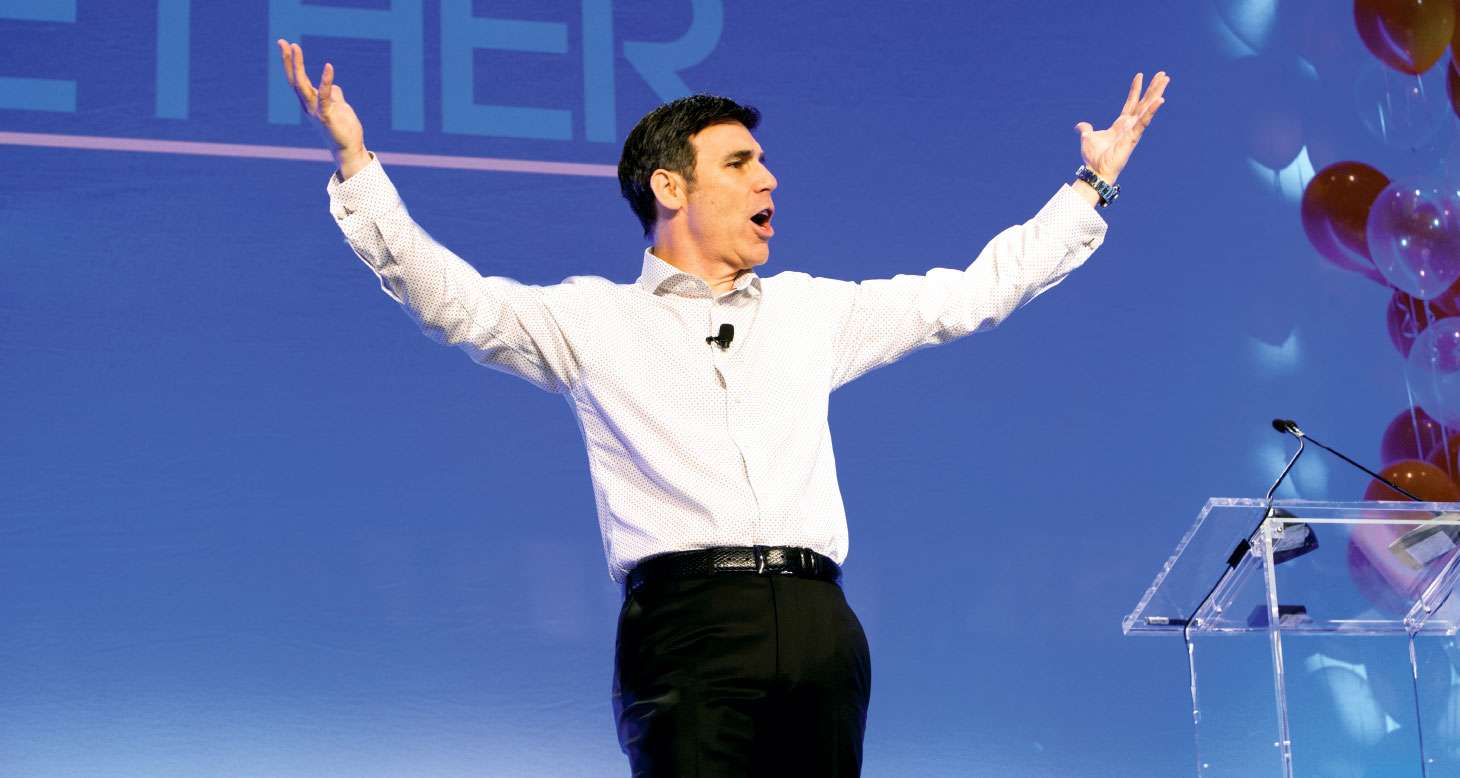
Being a good safety leader in the workplace takes more than knowing procedures and policies. “Expertise does not make you a good leader and it doesn’t make you safe,” said motivational speaker Garrison Wynn, a best-selling author and safety culture consultant.
“A good safety leader is someone who is willing to listen – someone who makes employees feel heard and valuable.”
Twenty-five per cent of all workplace fatalities in the U.S. are in construction, and it is also the workplace environment with the highest rate of suicide, says Wynn.
“As a safety leader in the construction industry, you have to have a detectable level of compassion and likeability to have any influence and be heard well enough by the people you’re managing,” said Wynn. “They used to say, ‘You don’t have to like me, you just have to respect me.’
“Well, those days are over. Nobody, these days, respects anybody they don’t like. We have to treat people with compassion. If you conduct yourself in an unlikeable fashion, people look for reasons not to trust or agree with you.”
Providing clarity in your safety message involves focusing on simplicity rather than on technicality, says Wynn. “If you understand what people do for a living and what is important to them, then you know how to clearly explain how safety applies to them,” said Wynn.
“Clarity is the foundation of communication. It doesn’t matter how smart you are if no one knows what you’re talking about. You have to be extraordinarily clear. Putting on airs or trying to sound smart or speaking technically to someone who doesn’t have the technical experience is not very effective. If people keep asking you over and over again to explain the same things, it means you’re probably not explaining it effectively. If you can’t simplify something, then it’s usually proof that you don’t understand it well enough yourself.”
“People who believe they have a good job do a good job. Employee opinion drives productivity and safety.”
Garrison Wynn
The safety culture at a workplace gets set at the top, says Wynn.
“What flies out of the direct supervisor’s mouth is the culture,” said Wynn. “Getting down to the nitty gritty, it’s not what you think or believe but what is said on the jobsite, which is the implementation of the safety culture.”
The connection between relationships and actions affects the way that people operate within their jobs, says Wynn.
“Let’s say we have one organization with 10 locations and one of those locations has a better safety record than the others,” said Wynn. “Why is that? It’s because they know each other, they talk and they communicate. They are willing to talk if they see something that doesn’t look safe because they don’t feel they will face criticism or retaliation for speaking up.”
Engaged employees feel supported by their direct supervisors and they understand that the job they do every day helps the entire organization succeed. They also see a future for themselves within the organization.
“That’s what a good job looks like,” said Wynn. “People who believe they have a good job do a good job. Employee opinion drives productivity and safety. According to Evolve Performance Group, engaged employees are 43 per cent safer on the job than disengaged ones.”
Sometimes people don’t follow procedures because they think they can do it better and maybe even safer another way, says Wynn, adding that sometimes people have so much safety equipment and so many procedures that they feel safe even if they don’t use these items.
“Knowledge or stuff is not success,” said Wynn. “Implementation is success. I think we get lulled to sleep sometimes because of all our new safety advances.”
A long-time employee may require a different approach than a younger or new employee, says Wynn.
“The reason people don’t want to change is mostly because nobody wants to be a senior beginner,” said Wynn. “They don’t want to wake up and realize that what they know is no longer valid and so they cling to their old ways. We have to be able to show them how their existing knowledge and experience is going to help them with the new way. Once they see their experience is still going to be valuable, then you can show them how different might be better. The worst thing you can do, which is the most common thing that happens, is to say, ‘What you’ve been doing for five years isn’t working so we’re going to do something totally different and we’re going to have to retrain you.’ That doesn’t work. Nobody wants that.”

“If you tell someone they are important, they are much more likely to listen to what you have to say.”
– Garrison Wynn
Younger employees need to know the reason why something is important, says Wynn.
“We taught an entire generation – pretty much anyone 35 years and younger – to ask why and question everything,” said Wynn. “If you want to be effective with younger people, you need to tell them why you are doing something and what a good job looks like when it is finished. When younger people don’t know why, they feel less safe.”
Making sure the employee feels valued is extremely important, says Wynn. It shows that person they contribute something meaningful to the organization and that they are good at what they do.
“If you tell someone they are important, they are much more likely to listen to what you have to say,” said Wynn.
Citing an example of a 25-year veteran who has never had an incident, an injury or even a near-miss but doesn’t work in a safe way, Wynn explains the most successful approach to take when discussing the issue with such an employee.
“I would say, ‘I know you have never had an incident, but the problem is that other people are watching and emulating you and I’m afraid they’re going to get hurt because they are not you and the way that you do it is not the safe way,’” said Wynn. “‘Safety is a team sport so I’m not asking you to do this for me or even for you, but for them.’”
Communication, listening and employee engagement is the magic bullet for safety, says Wynn.
“I’ve been doing this for 28 years,” he said. “We have looked at thousands of anonymous employee surveys and there is a pattern. When the employee survey [reveals], ‘I feel heard and listened to by my co-workers and my supervisor and I have relationships at work,’ that is where we saw the fewest of incidents, near-misses and fatalities. When the survey responses said, ‘I don’t have communication or friends at work,’ that is where we saw the most near-misses and the most fatalities. Culture is the cure and the key to success as a safety leader.”
This article appeared in Issue 2 2024 of PileDriver magazine and is reprinted with permission.